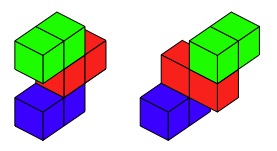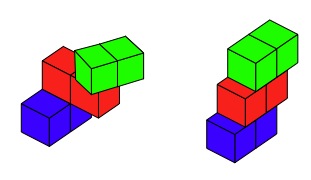Copyright © University of Cambridge. All rights reserved.
'Building with Rods' printed from https://nrich.maths.org/
Show menu
Why do this problem?
This activity acts as a further extension to Two on Five. It's an activity that is intended for curious pupils to give them opportunities to explore a spatial context using their intuition and flair. It also provides an opportunity to create a system for solving such problems. The "Teacher
Support" at the bottom of this page is recommended in regard to the curiosity aspect of this task.
Possible approach
As this activity is intended to challenge the 'best' problem solvers in the class, it might be presented as on the website or in a one-to-one situation, encouraging discussion between adult and pupil. The pupils may need access to a computer program for drawing solutions.
Key questions
Tell me about what you have found.
Can you describe the ways that you arrived at these shape arrangements?
How did you construct these on the computer?
Can you describe the ways that you arrived at these shape arrangements?
How did you construct these on the computer?
Possible extension
For those who are successful, they should be encouraged to try Building with Longer Rods.
Possible support
It will probably be helpful to have interlocking cubes available and different kinds of squared paper.
Teacher Support
This task was created to help in the pursuance of curiosity within the Mathematics lessons.Help may be found in the realm of curiosity in watching parts of these excellent videos.
Firstly "The Rise & Fall of Curiosity", particularly the extract [23.50 - 37.15] on "adult encouragement answering and teacher behaviour."
Secondly, "The Hungry Mind: The Origins of Curiosity", particularly the extract [8.22 - 12.29] on "Children asking questions"
First can also be found at - https://www.youtube.com/watch?v=X-0NOrIU67w
Second can also be found at https://www.youtube.com/watch?v=Wh4WAdw-oq8

